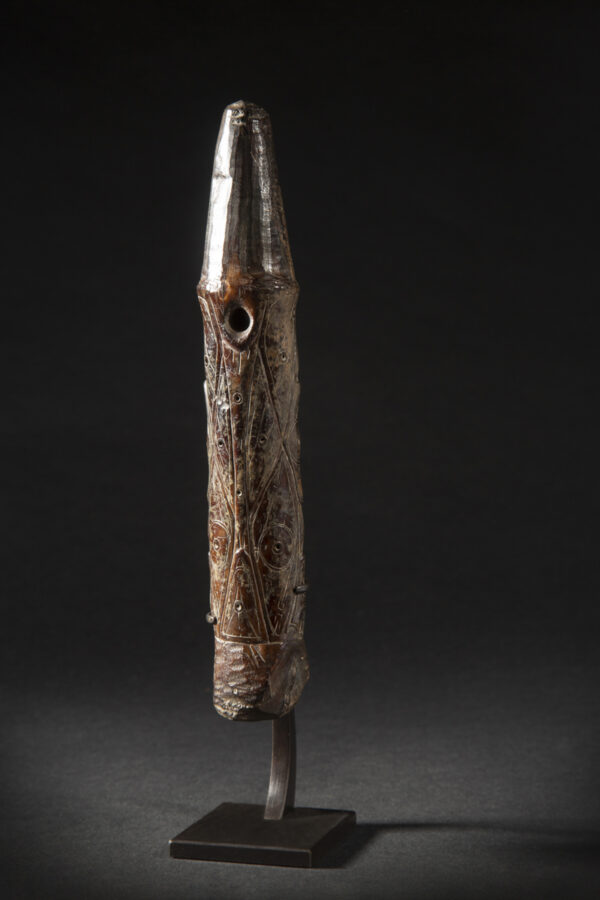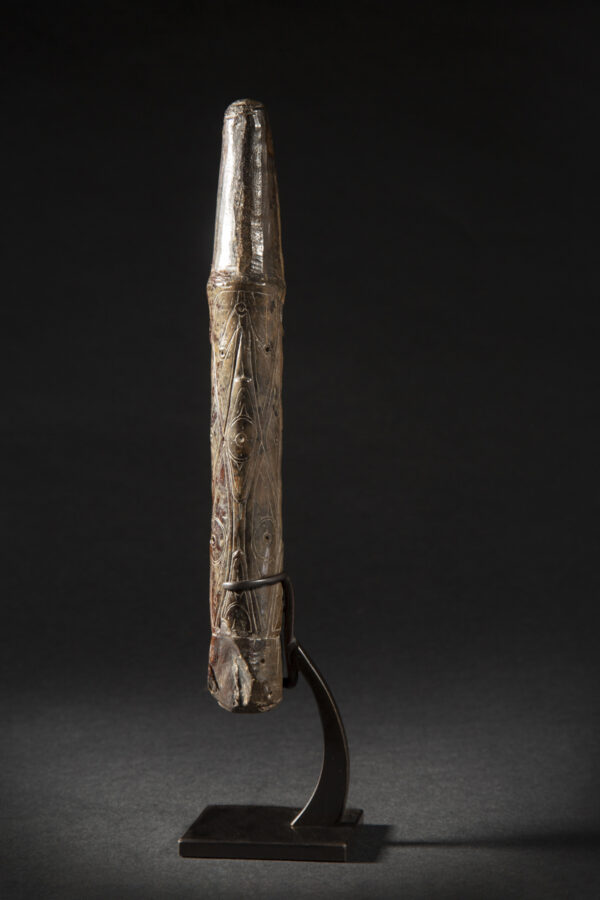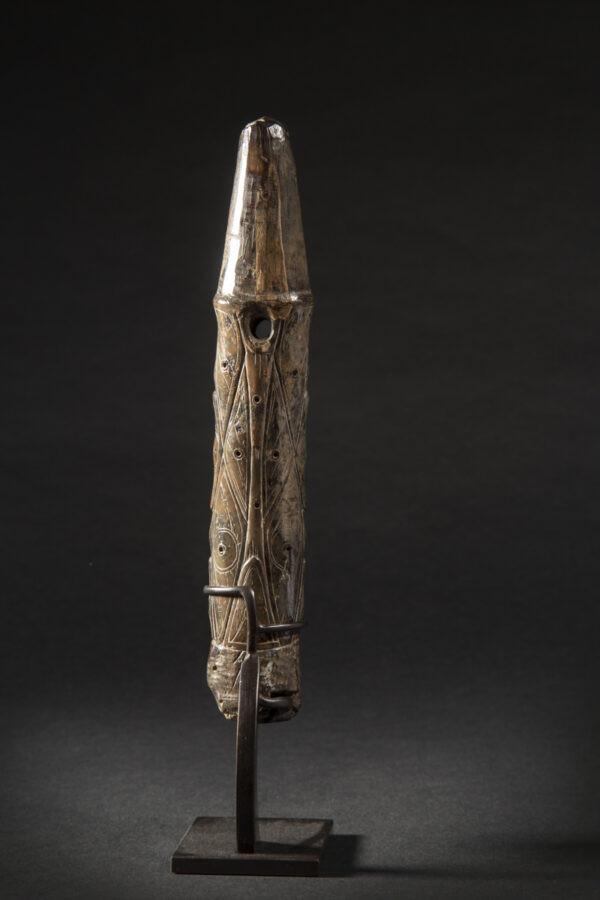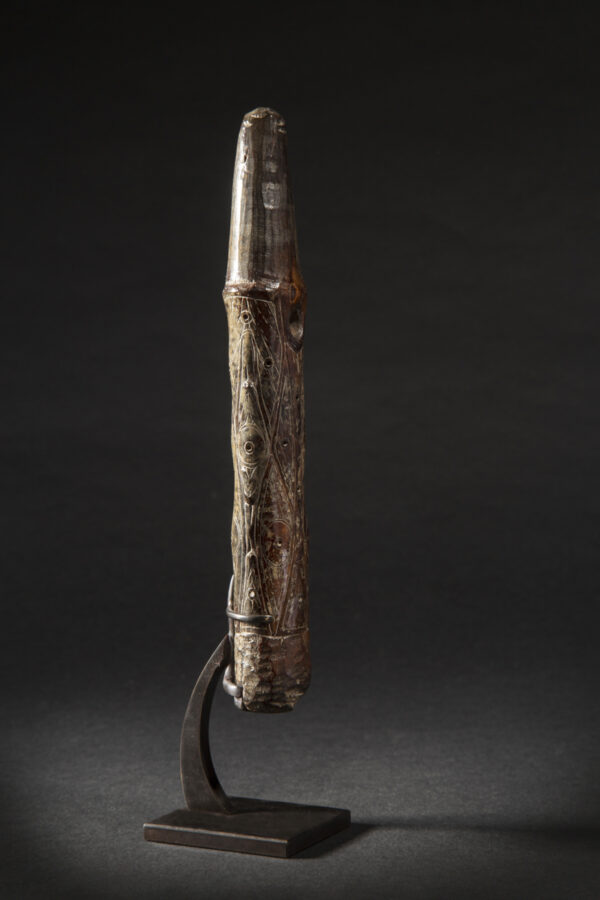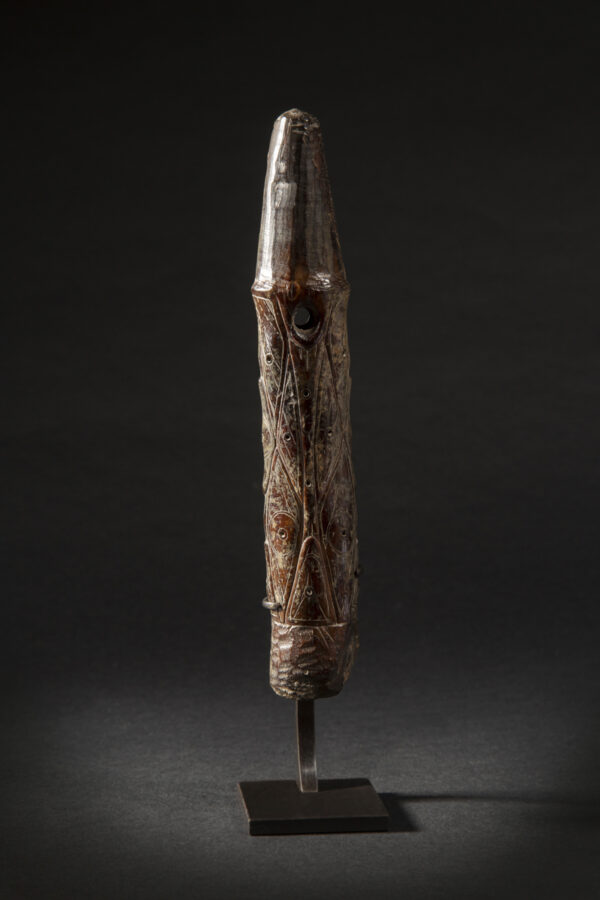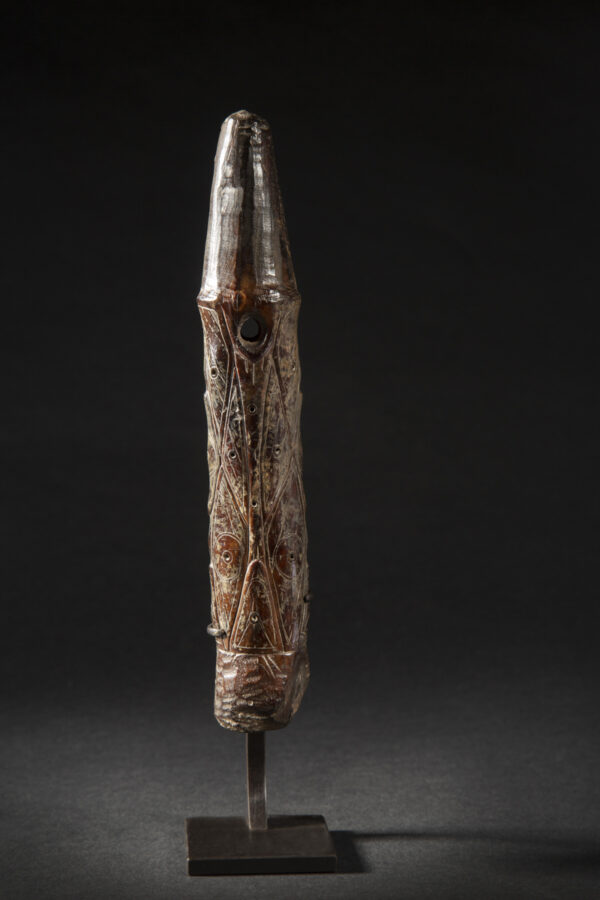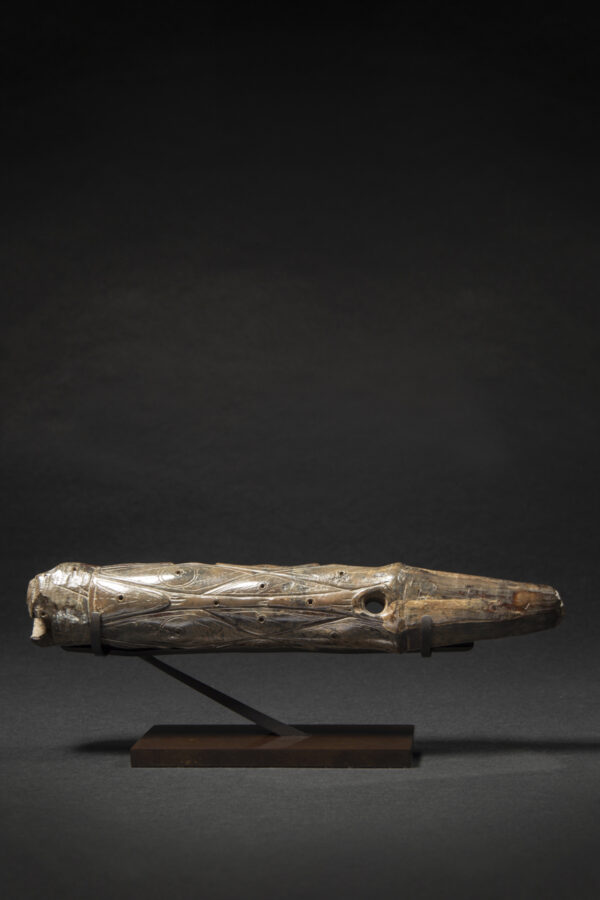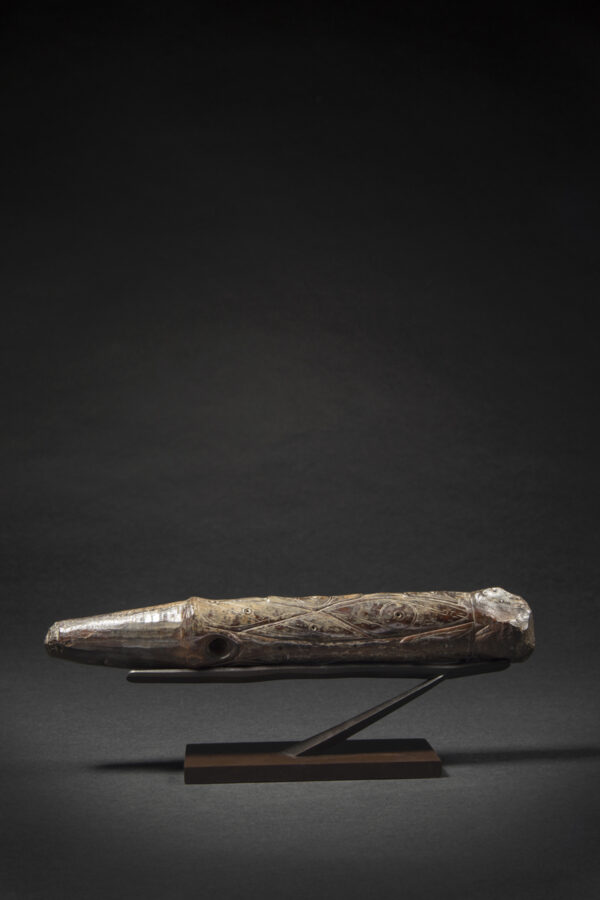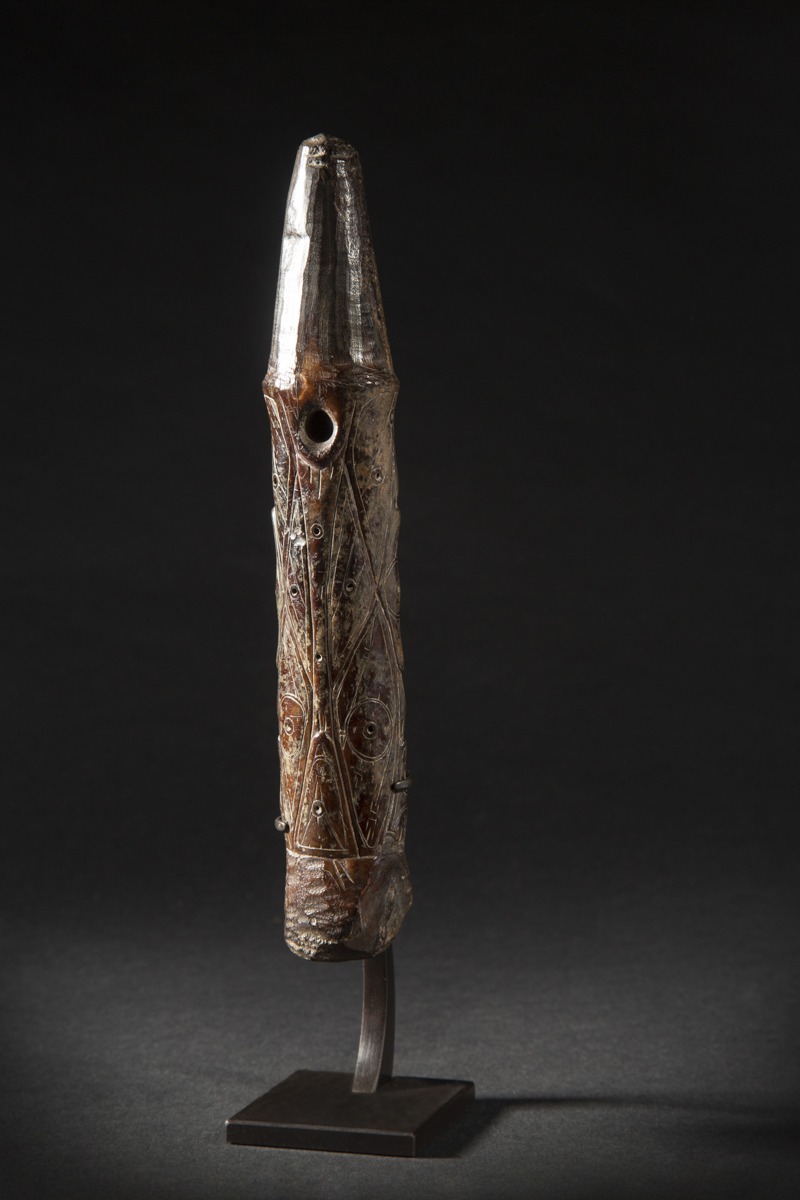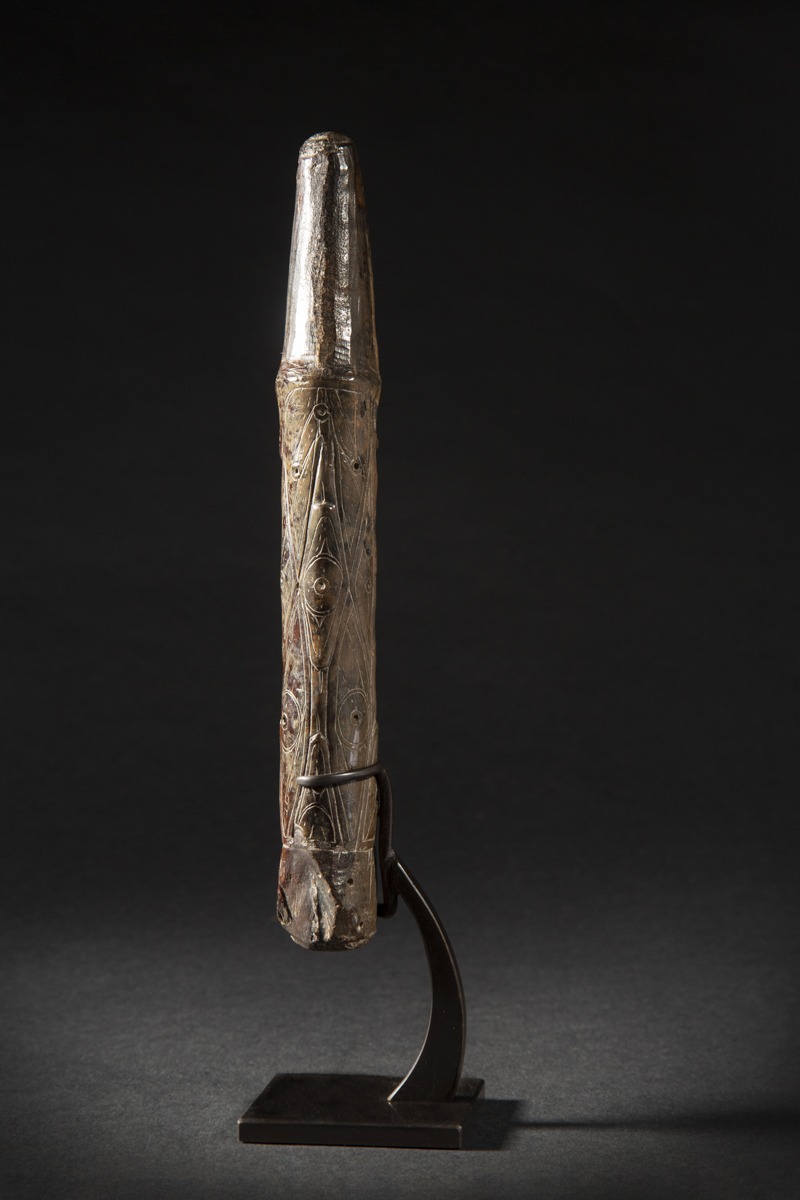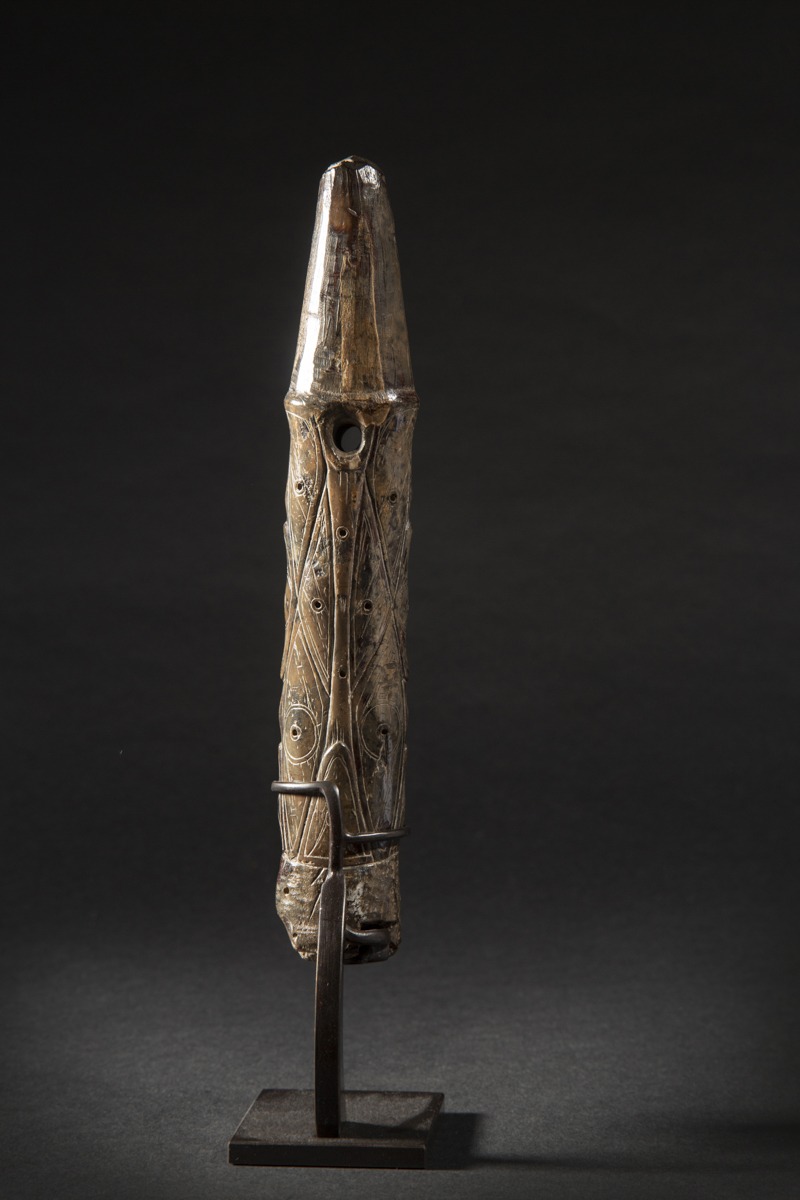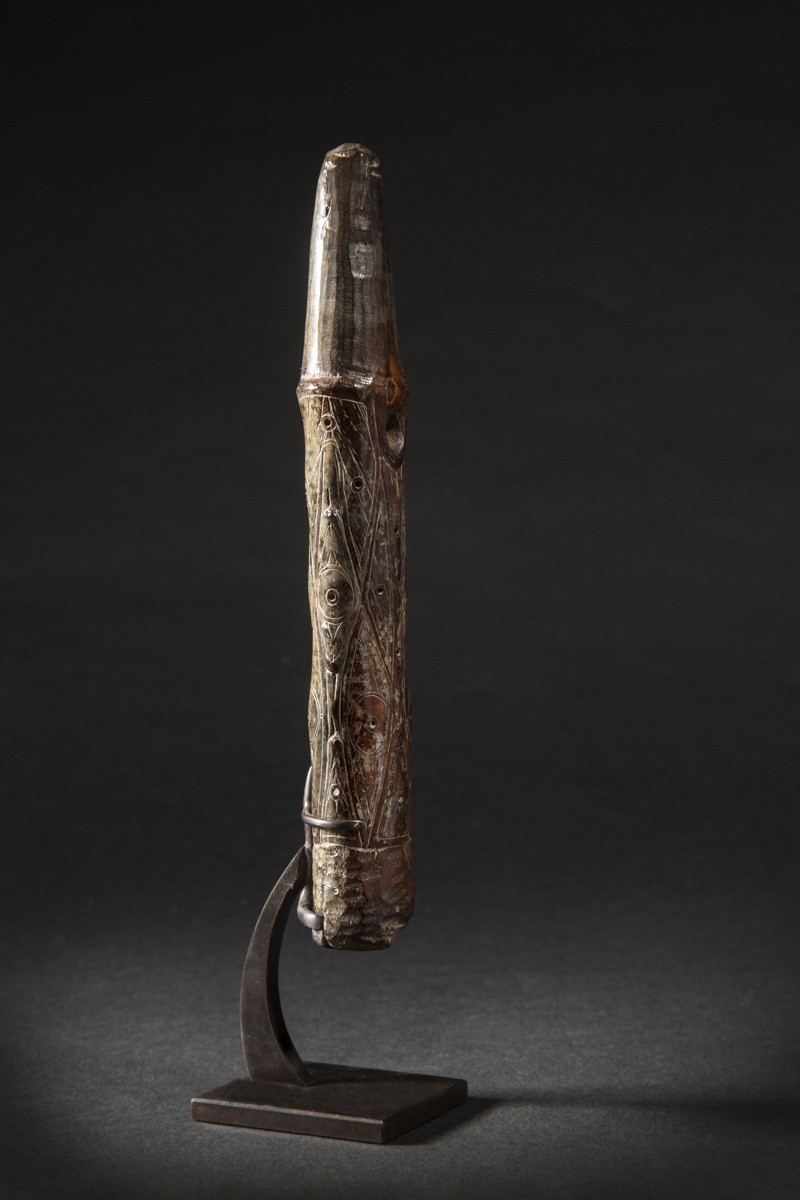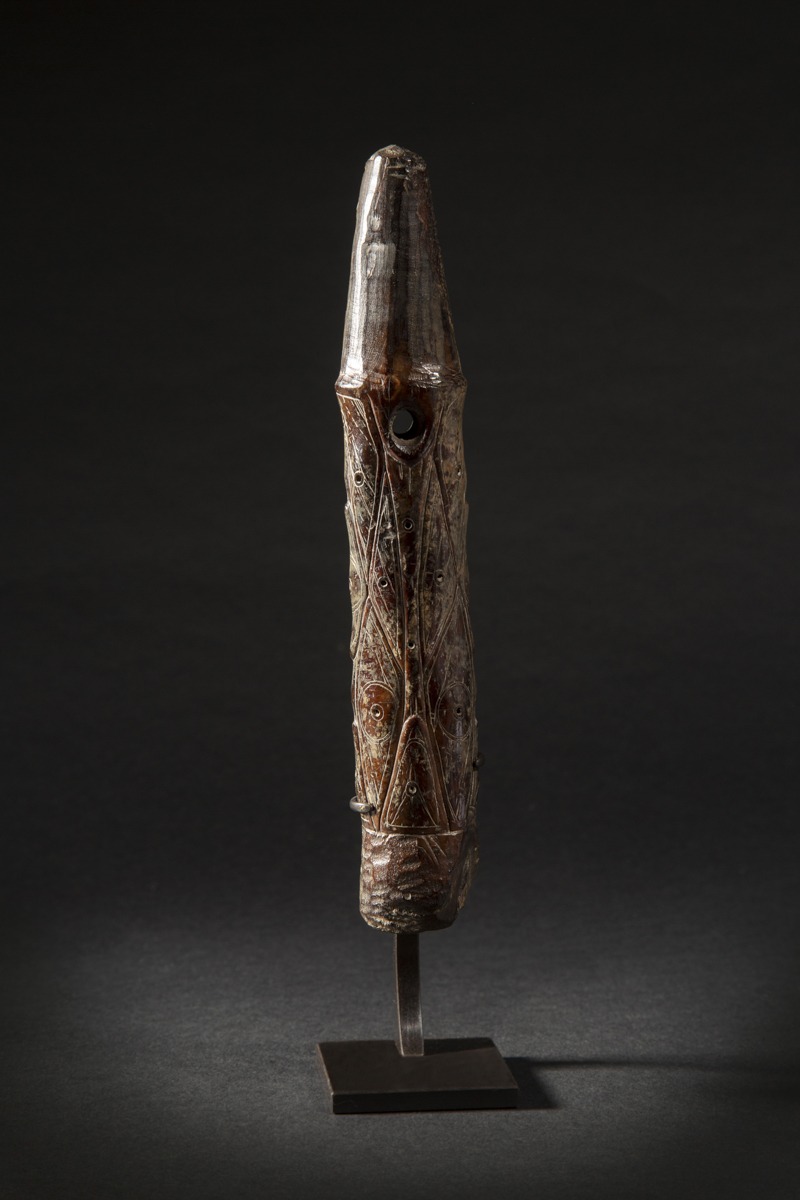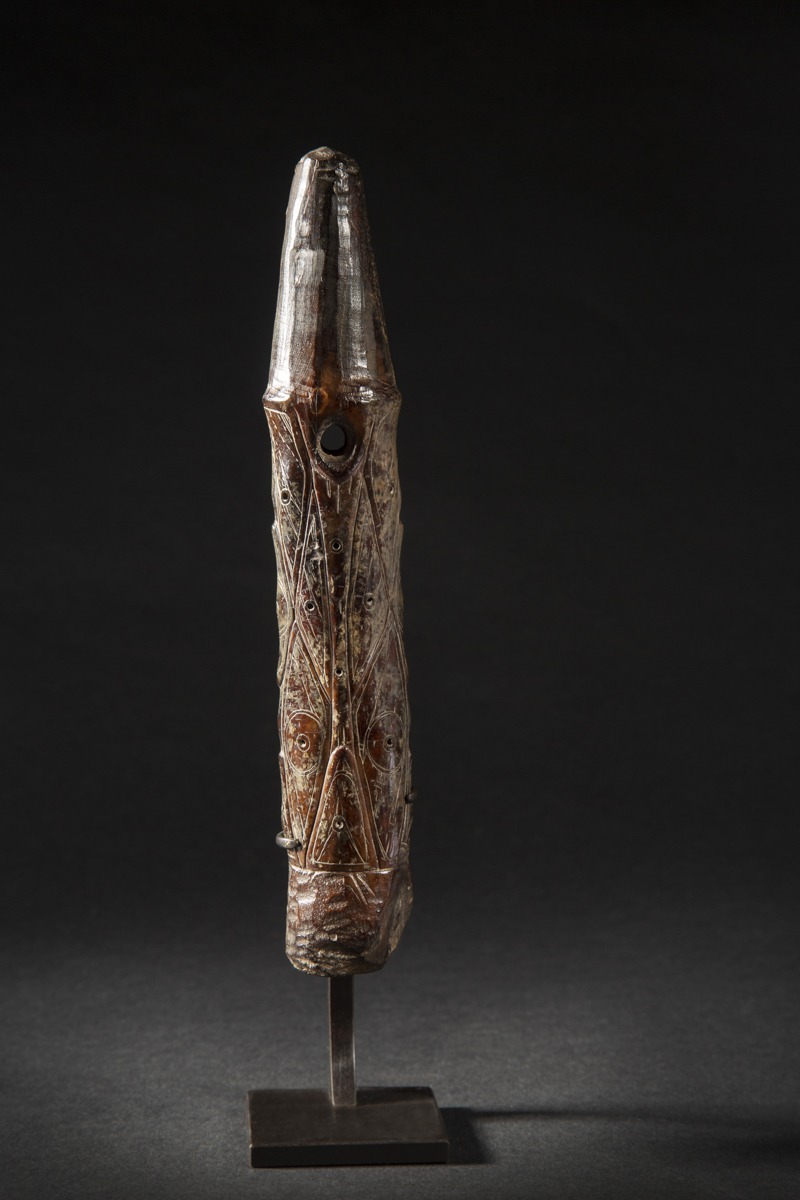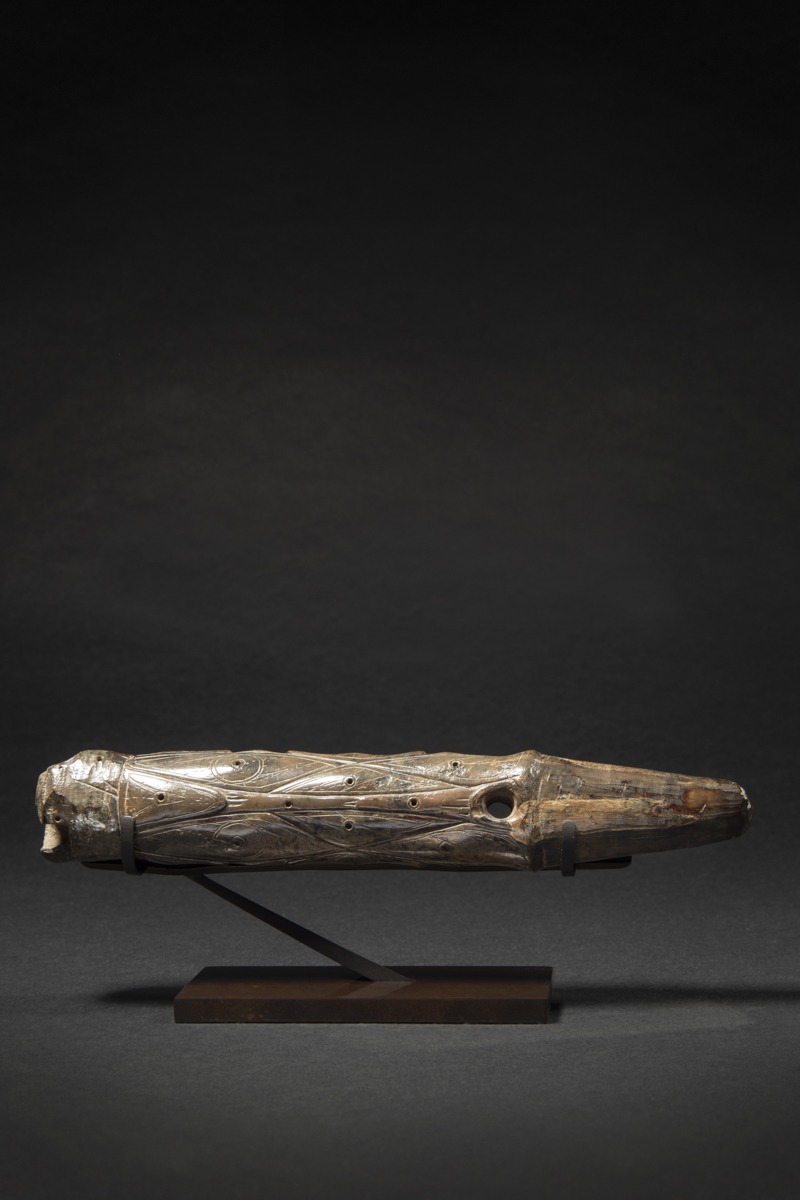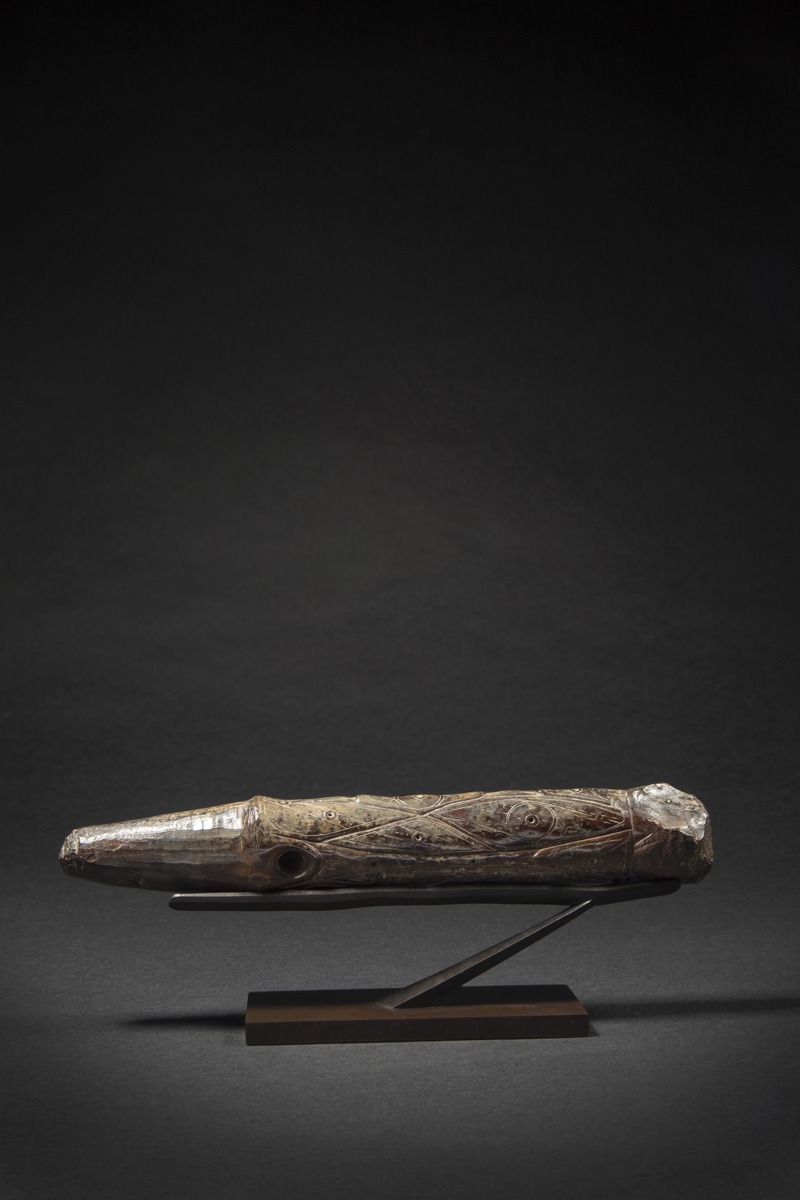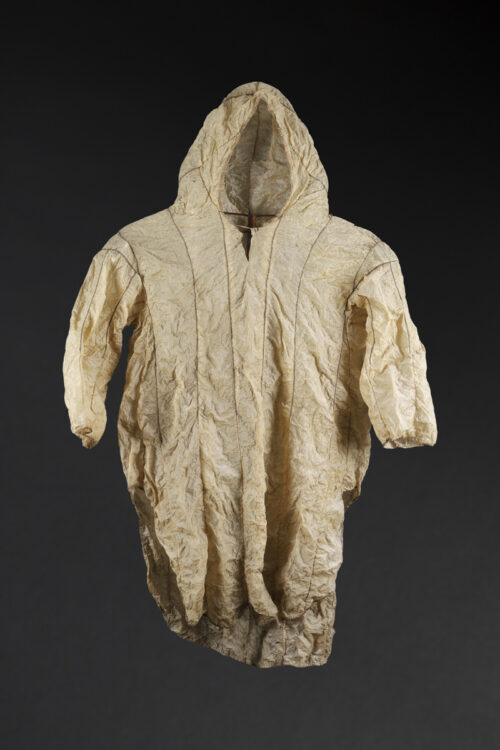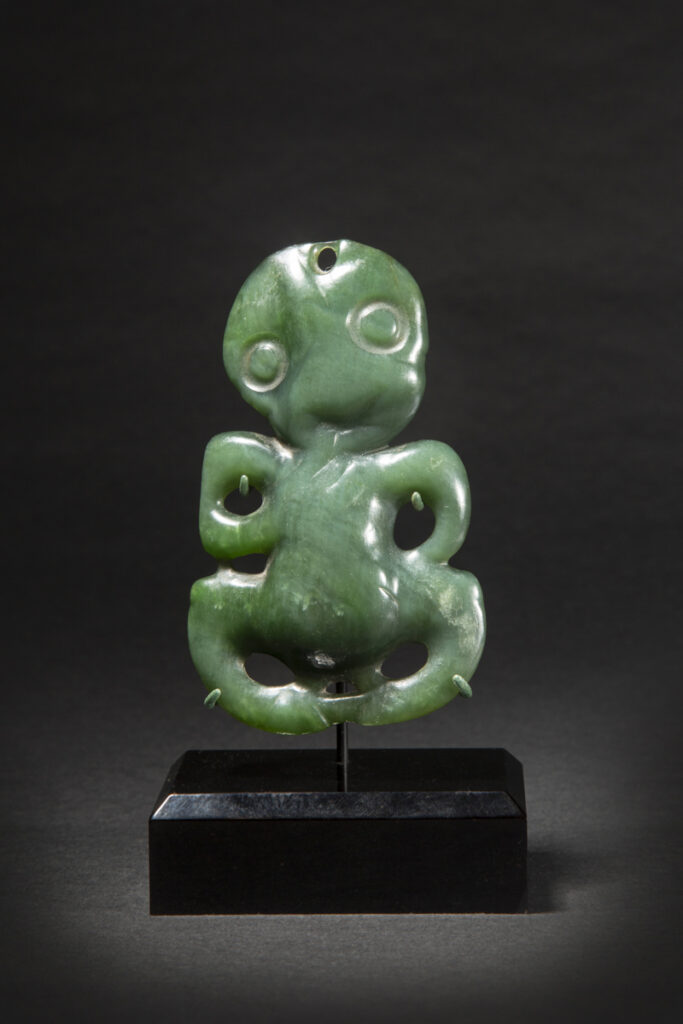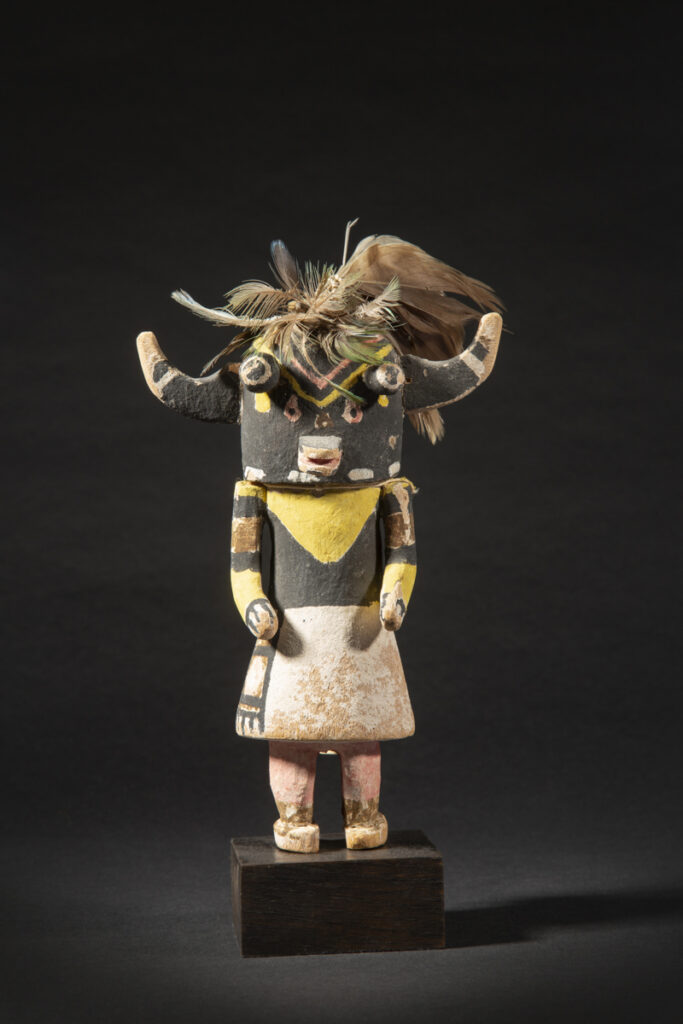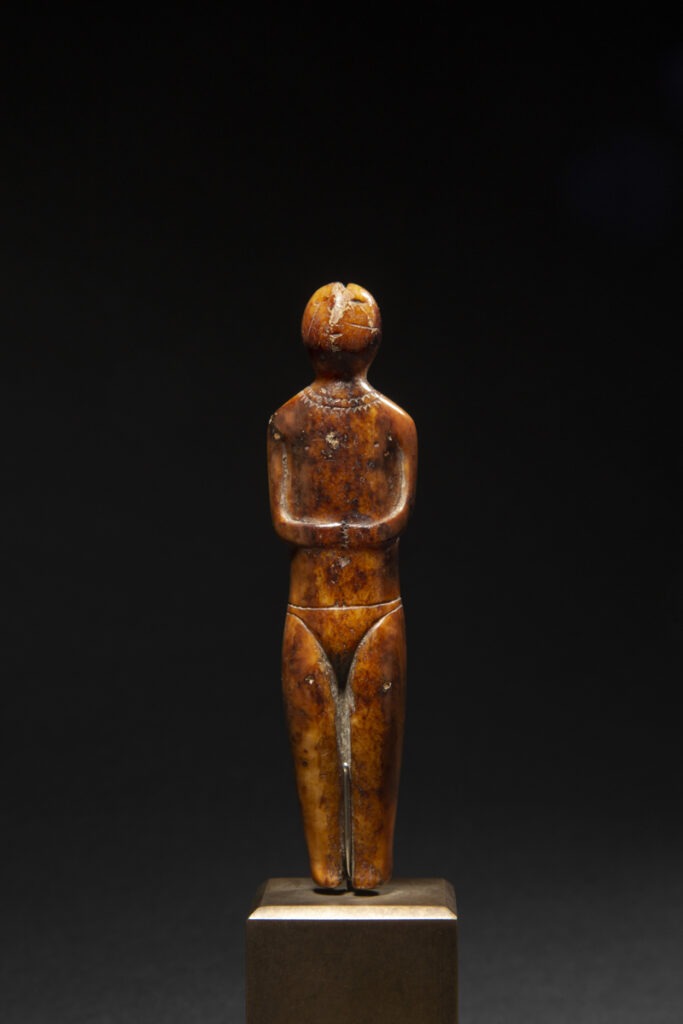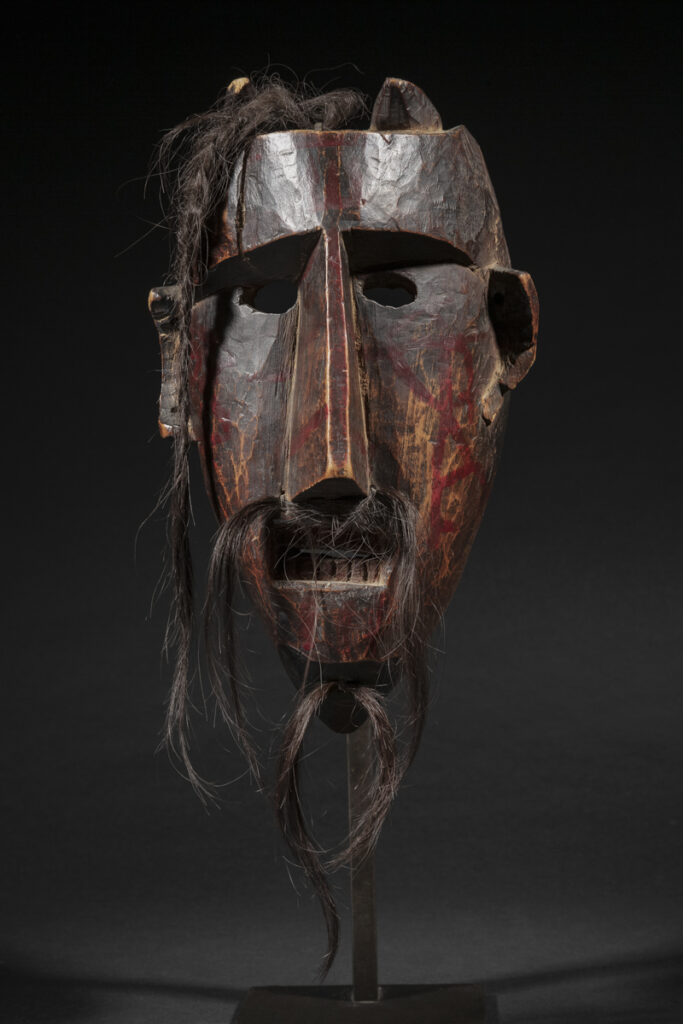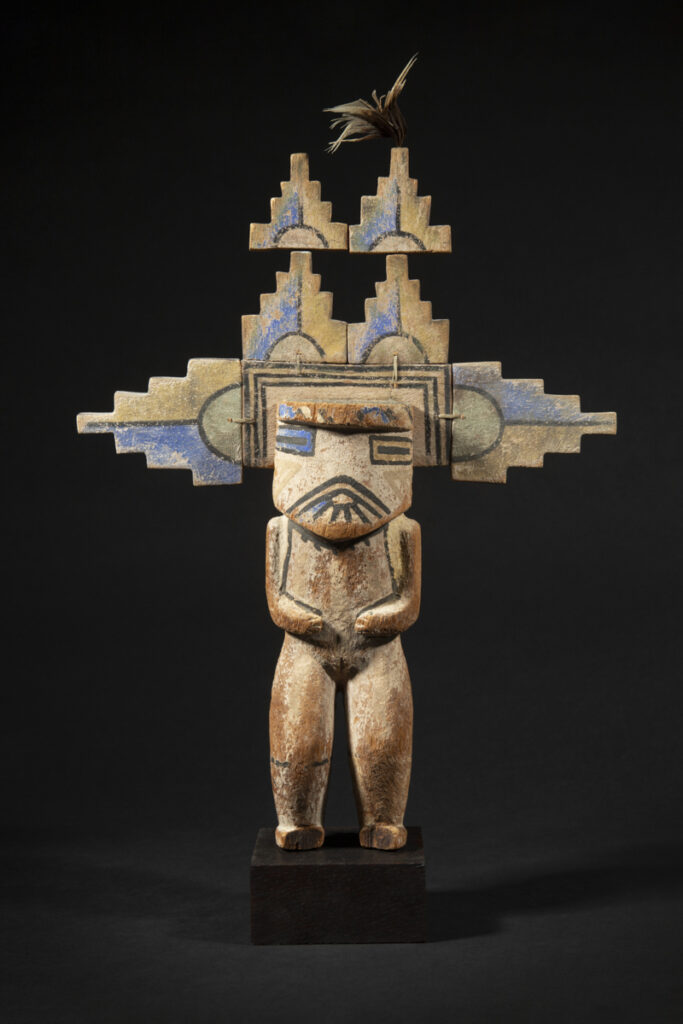Harpoon Element
Alaska
Socket piece
Old Bering Sea III culture
Ancient Eskimo
100-500 AD
Marine ivory
Height: 19 cm – 7 ½ in.
Provenance
Ex collection Jean-Claude Bellier, Paris
Ex collection Guy Porré et Nathalie Chaboche, acquired from the above
Literature
“Ancient Eskimo Ivories of the Bering Strait”, Allen Wardwell, 1986, pl. 96 p.85
Exhibition
“Ancient Eskimo Ivories of the Bering Strait”, 1986-1988 :
The Anchorage Museum of History and Art
The Lowie Museum of Anthropology, Berkeley
The Detroit Institute of Arts
The American Museum of Natural History, New York
According to Allan Wardwell (Ancient Eskimo of the Bering Strait, 1986 pages 84 et 90), this socket piece was originally likely part of the same harpoon as the head presented here: “Harpoon Head Old Bering Sea”
As mentioned by Peter Loovers (Sainsbury Centre), based on Sergei A. Arutunov’s ‘The Eskimo Harpoon’ in "Gifts from the Ancestors: Ancient Ivories of Bering Strait", Princeton University Art Museum, 2009, pp 52-57, the sophisticated Old Bering Sea (OBS) harpoon consists of five parts: the counterweight-stabiliser (winged object), the shaft, the socket piece, the foreshaft, and the harpoon head. The harpoon would have been thrown with an atlatl and the harpoon head would have been attached to an inflated seal bladder. The walrus ivory components of the harpoon were beautifully carved and in particular the counterweight-stabilizer, the socket piece, and the harpoon head were with striking with intricate designs.
This reusable hunting implement had to be heavy enough to penetrate the thick skin of walruses or seals and short enough to be thrown by a hunter aboard his kayak.
The invention of the harpoon ensured organized, predictable, and fruitful hunting expeditions, establishing the foundation for a stable and flourishing culture.
Arctic carvers decorated their hunting gear with shamanic designs to enhance their spiritual potency and maximize their efficacy.
